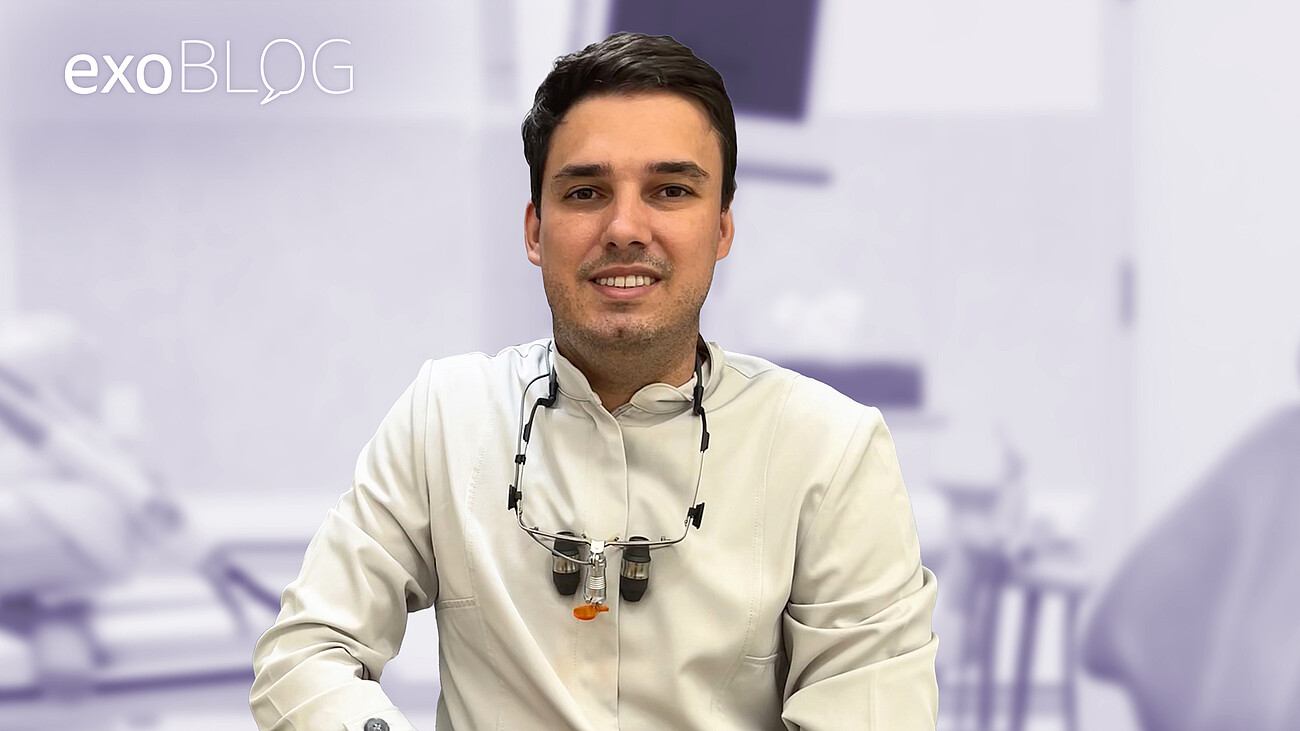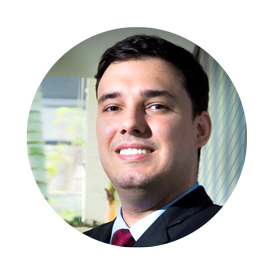Take the digital leap, and you’ll never look back
Brazilian periodontist Dr. Vítor Marques Sapata talks to us about his enthusiasm for exoplan and why he tells colleagues unsure about taking the digital plunge to "just do it!" Vítor comes from a large family (four generations!) of dentists spread throughout Brazil. With a doctorate from the University of São Paulo and research ties to the University of Zurich, Vítor has a deep understanding of dental trends in multiple countries. He practices periodontics at a University of São Paulo-affiliated clinic and teaches as well.
Q: What exocad software do you use and why?
A: I use almost all exocad products butexoplan the most because I’m a periodontist. Almost 100% of my implants are guided right now. exocad is my number one software for everything because it’s really easy to use.
Q: How did you get started using a digital workflow?
A: I was doing research at the University of Zurich in 2015, analyzing STL files and planning software. When I came back to São Paulo, I set up a dental lab with a colleague, and we continued down the digital path.
“We cut down the time of surgical procedures, like guided implant placement, from 1.5 hours to 10-15 minutes.”
Q: What are some challenges to going digital?
A: The reality today is that many people don't know how it works. I have a lot of dentist friends. When they start to use the digital workflow, they say, ‘Whoa, why didn’t you tell me this earlier? Now I have a different workflow. I work less, and my practice is more precise and so on.’
Q: Explain that to me. What’s the cost/time savings like with digital versus analog workflows?
A: I can reduce crown fabrication from seven days and five visits to three days and two visits, working with my lab partner. We cut down the time of surgical procedures like guided implant placement from 1.5 hours to 10-15 minutes. And don’t forget the morbidity of the patient is less and the precision of the crown and the implant placement are better. You spend less time correcting small errors that you perform if you do it manually. So the implant will be in the best position, and the prosthesis will not need so much adjustment to fit.
Q: How aware are patients that you’re fully digital?
A: It depends on your target group. Patients with higher income notice because these people know how much time costs to spend at their dentists’ office. They want it to be as fast as possible, and the best as possible. They like that they can see their mouth on the big screen with the intraoral scanner, and they see the difference of the materials. We also have videos that show how the implant is done.
Q: Do you think it’s important that patients know you’re using a digital workflow?
A: We need to inform the patients because they will encourage the dentists to change to digital. The dentists know about digital options, but many patients don’t. I have a lot of patients who said, ‘I came to you because my previous dentist doesn't work with the digital workflow. I saw these videos on YouTube, and I want to do my procedure this way.’
"The productivity is triple, four times more than with analog."
Q: How does going digital impact the workflow between labs and dentists?
A: I know a lot of labs in Brazil that have fully implemented digital workflows, but some dentists don’t even know their labs are digital. They don’t know that the impression they sent to a lab was scanned and then a CAD software designed the crown or the coping. Some of those labs, they don’t want to pour stone on impressions anymore. It’s too messy and time consuming. They need one employee to do just this all day. If they don’t accept impressions that need to be poured from stone, then that employee can work on other cases in the lab. So for them economically, it is much better to go digital, and the risk of flaws is reduced. Everything is better. And yeah of course the costs are much lower than analog work because you save time. The productivity is triple, four times more than with analog.
Q: Ok, now for some lighter questions. Manual or electric toothbrush?
A: As a periodontist, a manual toothbrush.
Q: Do you floss morning and evenings?
A: Yes, I’m a periodontist.
Q: Best music to start your day?
A: AC/DC
Q: Any last advice for a colleague considering a move to digital?
A: Just try it once. You won’t look back. Really, compared to the analog workflow, there are no negative points.
Vítor Marques Sapata D.D.S., M.S., Ph.D. is a collaborating professor in the Department of Stomatology (Division of Periodontics) at the University of São Paulo and professor at UniCesumar. Dr. Sapata received his dental degree at the State University of Maringá (Maringá-Brazil), in 2011. He completed his periodontics training and master’s degree at the State University of Maringá in 2013. In 2018, he received his PhD in Periodontics, at the University of São Paulo, with a one year scholarship at University of Zurich (Switzerland). Besides the academia, he maintains a private practice limited to periodontics and dental implants in Maringá, PR, Brazil. Author of several national and international peer reviewed publications and book chapters, his research focuses are implantology, periodontal and bone regeneration. To keep up with Dr. Sapata’s work, follow him on Instagram or LinkedIn.

by Caitlan Reeg
Writer at exocad
Caitlan Reeg spends her days telling the world about the innovations her colleagues create. She’s passionate about healthcare, technology, and the ways the two interact to improve our lives. A former journalist, Caitlan has worked on staff at Dow Jones Newswires in Frankfurt and at the national public radio program Marketplace in Los Angeles.




